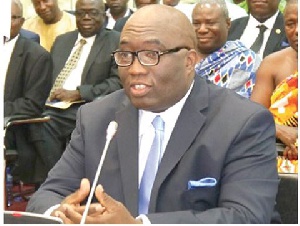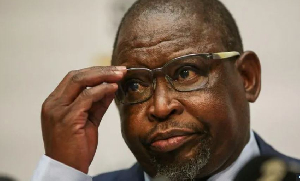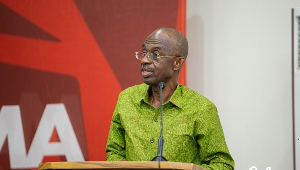Mr. Joe Ghartey, the Minister for Railway Development, has indicated that the Ministry has introduced an enhanced Monitoring and Evaluation mechanism to ensure that all contracts awarded are executed on schedule.
He said the Ministry was working tirelessly to transform the defunct Railway sector and the Training School located at Essikado in the Western Region into a world-class University to gain maximum economic impact next to the port and harbours.
To this end, he said the Ministry of Railway Development has signed a Memorandum of Understanding (MoU) with the University of Mines and Technology (UMaT) at Tarkwa to train technical personnel for industry and academia.
Mr. Ghartey said this during the inspection of the 22 kilometer Western rail line from Kojokrom to Eshiem and to Manso in the Mpohor District of the Western Region.
The Minister said, the construction of a new standard gauge railway line from Kojokrom to Manso, funded by the government of Ghana, was progressing steadily.
A 2.55km earthworks up to sub-ballast of the 5km Kojokrom-Eshiem project had been completed while the construction of a railway bridge was ongoing.
In addition, the site camp for the 17km Eshiem-Kojokrom project has been erected with the majority of the track materials on site.
Mr. Nadav Simon, Managing Director of Amandi Holdings explained that the major railway line in the Western Railway network was about 340km which would connect the Port of Takoradi with Kumasi, branch to Awaso and extend to Nyinahini, in the Ashanti Region.
According to him, the project would serve two major mines including the Ghana Manganese Company at Nsuta and the Ghana Bauxite Company at Awaso, all in the Western Region.
Transportation of other bulk cargo such as cement, mining equipment, timber, flour and petroleum would also benefit from the construction of the rail line when completed.
Mr Nadav Simon added that the project would entail a 22km single standard gauge truck, three train stations, power, water and sewage systems as well as pedestrian bridges.
He further stated that it would also have three road overpasses and the longest railway bridge in West Africa which would be about 375 metres and 45 drainage culverts.
“it will have an asphaltic sub-ballast layer for carriageway rain protection, more than one million cubic metres (m3) of earthworks and more than 250,000 m3 of quarry materials”, he noted.
Business News of Sunday, 12 May 2019
Source: ghananewsagency.org

















